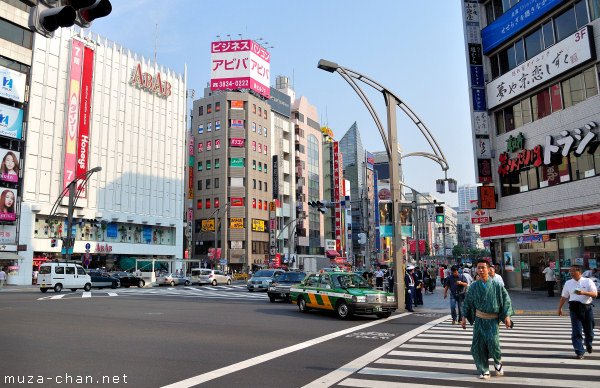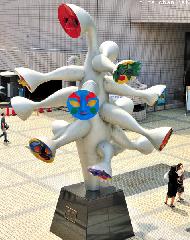Even from the beginning, the old Edo was roughly divided in two areas, the Yamanote 「山の手」 and the Shitamachi 「下町」. Yamanote was the land from the plateau located to the west of the Imperial Palace (hence the meaning “towards the mountain") and Shitamachi (the “low city") was the flatland near the banks of the Sumida river.
Interesting is that this division was not only geographical but also cultural and social. It was generally accepted that in Yamanote lived the higher social classes (samurai and Tokugawa shogunate vassals), while Shitamachi was inhabited by the lower status classes, like merchants and craftsmen…
Actually, Shitamachi represented the real Edo culture, being also the true center of the capital. And the area from this photo, in Ueno (the intersection between Chuo-dori and Shinobazu-dori), was at the time the “hearth” of Shitamachi. Not many features survived until today, but the area is warm and friendly and, occasionally, you can get the traditional feeling of Shitamachi by meeting the local people still dressed like in the old times:
EXIF Info:
|
Yesterday’s Japan Photo:Shibuya Children’s Tree |



